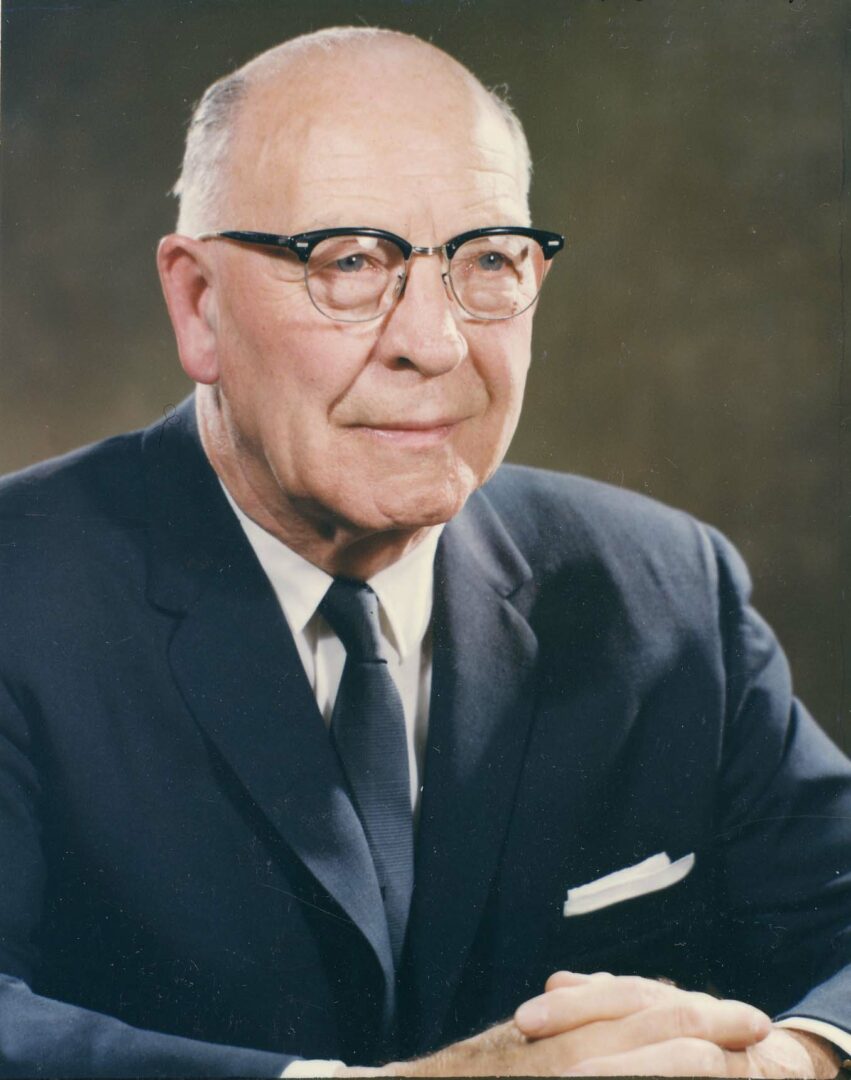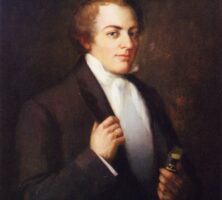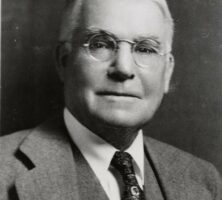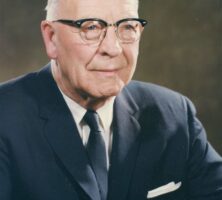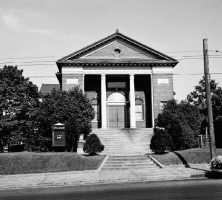The Church of Jesus Christ of Latter-day Saints (LDS Church), whose adherents are known as Latter-day Saints or Mormons, has a long history in Georgia. While the church’s growth came primarily from migration into Georgia, much was also the result of strong local leadership. By the end of the twentieth century, Atlanta had become a major center of Mormonism, and as of 2007 more than 60,000 Mormons lived in the state.
History and Doctrine
The LDS Church was organized by Joseph Smith in Fayette, New York, in 1830. Smith, born in 1805, reported the experience of a vision at around the age of fifteen, the first of many visions and revelations that would occur throughout his life. In the vision, God revealed to Smith that he should join none of the existing churches and that Smith would be an instrument in restoring the original church of Jesus Christ. On September 21, 1823, Smith experienced a second vision, this time in the form of a message from the prophet Moroni, who instructed him to uncover gold plates containing the history of an ancient North American people. In 1827, after several unsuccessful attempts, Smith obtained the plates, which had been inscribed by Moroni and his father, Mormon.
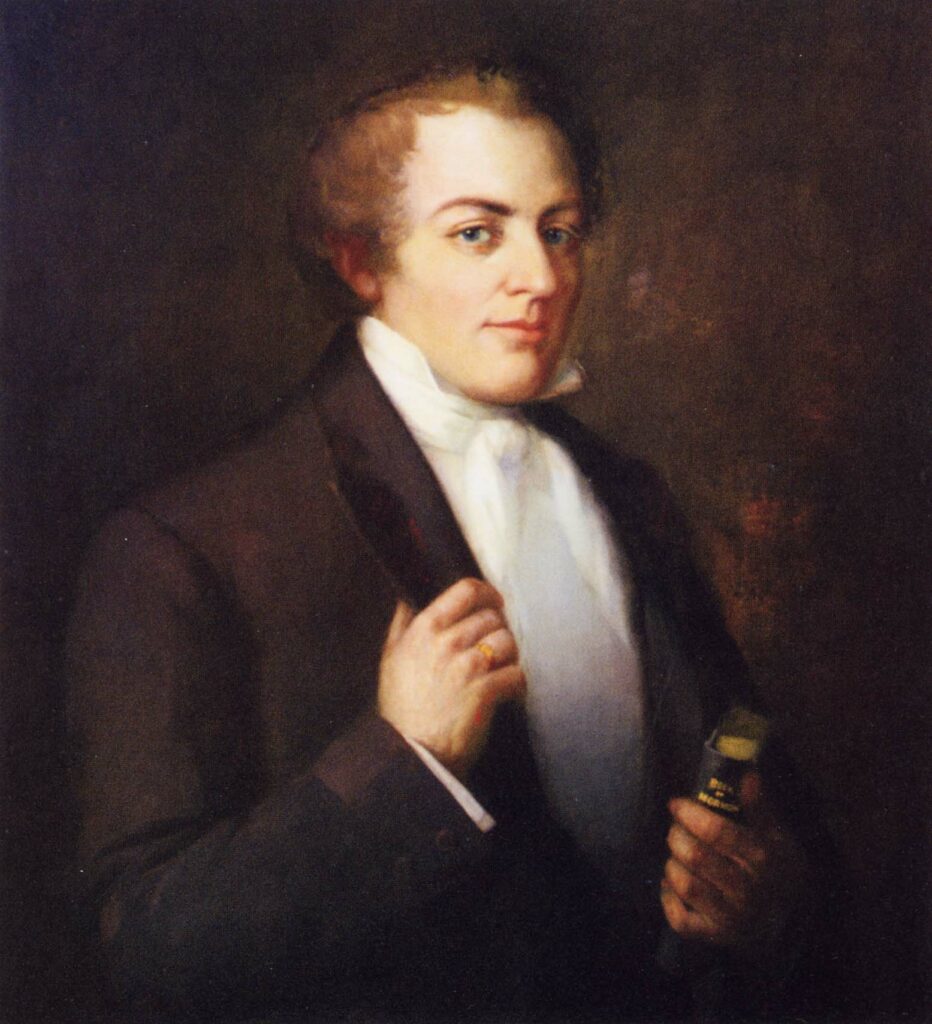
Courtesy of the Church Archives, the Church of Jesus Christ of Latter-day Saints
Over the next two years, Smith translated the text, which subsequently became known as the “Book of Mormon.” The Book of Mormon includes history, prophecy, the story of the appearance of Jesus Christ in America, and discussion of theological topics ranging from faith and repentance to infant baptism and the nature of the Trinity. In 1830 Smith founded the Church of Christ, which was based on his revelations and the Book of Mormon, and in 1838 the church adopted its current name, the Church of Jesus Christ of Latter-day Saints. During the 1830s the Mormon community moved to Kirtland, Ohio; Independence, Missouri; and Nauvoo, Illinois, where Joseph Smith was assassinated in 1844. In 1846 Smith’s successor, Brigham Young, led the community from Illinois to Utah, where the members settled in 1847. Utah remains the base of the LDS Church today.
Establishment in Georgia
Mormon missionaries came to Georgia in the 1840s, but no record remains of their activities. Missionary work in Georgia began in earnest after the Civil War (1861-65), when mission president John Morgan moved the headquarters of the newly established Southern States Mission from Nashville, Tennessee, to Rome, Georgia, in 1878. While in Rome, Morgan wrote “The Plan of Salvation,” a document designed to answer the questions of where human beings come from, why we are here, and where we go at the end of our lives. The pamphlet stresses the importance of faith, repentance, baptism, and the laying on of hands.
The church enjoyed success in northwest Georgia, especially in Haywood Valley of Chattooga County, but also met with increasing opposition from newspaper editors, ministers, and the Ku Klux Klan, all of whom decried the Mormon practices of polygamy (which officially ended with the church’s adoption of the Woodruff Manifesto in 1890) and conversion. That opposition peaked in 1879 when Joseph Standing, a twenty-four-year-old missionary from Salt Lake City, Utah, was murdered by a mob in Whitfield County. Standing’s companion, Rudger Clawson, was not harmed; he later became president of the Quorum of the Twelve Apostles, the church’s highest governing board.
The murder caused a sensation, and Standing’s funeral was attended by 10,000 people, who were addressed by top church leaders in the newly completed tabernacle at Salt Lake City. Although some of the perpetrators were brought to trial, they were acquitted. Today a memorial to Standing in Whitfield County is appropriately located on Standing Road.
Standing’s murder seemed to spur opposition from other north Georgians. Missionaries were beaten, pulled from their beds, kidnapped, wounded, and denied the right to preach (or were egged when they did). Mission headquarters were moved to Chattanooga, Tennessee, from 1882 until 1919. Missionary work was limited in Georgia for a few years, although missionary Teancum William Heward served in the state from 1879 until 1881 and kept a short journal chronicling his experiences. By the 1890s missionary activity began to increase once again.
Other congregations in Georgia were established early in the twentieth century near Douglas, in Coffee County; in Montreal, in DeKalb County; and in Buchanan, in Haralson County. The rented building occupied by the Mormon church in Montreal was dynamited in 1908, and the frame church in Buchanan was burned in 1912 while the congregation was attending a nearby religious debate. A new stone church was completed after a pitched battle with opponents.
Growth in the Twentieth Century
By 1936 the number of Mormons in Georgia numbered more than 1,800. A branch of the church opened a chapel in Atlanta in 1908, and the Southern States Mission headquarters moved there in 1919. For almost twenty years the mission’s activities were directed from Atlanta by Charles A. Callis and LeGrand Richards, both future members of the Quorum of Twelve Apostles. Callis, an Irish convert who earned a law degree while working as a coal miner, served twenty-five years as mission president before being called in 1933 as one of the church’s twelve apostles. His place was filled by Richards, who wrote the outline for his best-selling A Marvelous Work and a Wonder (1950) while living in Atlanta.
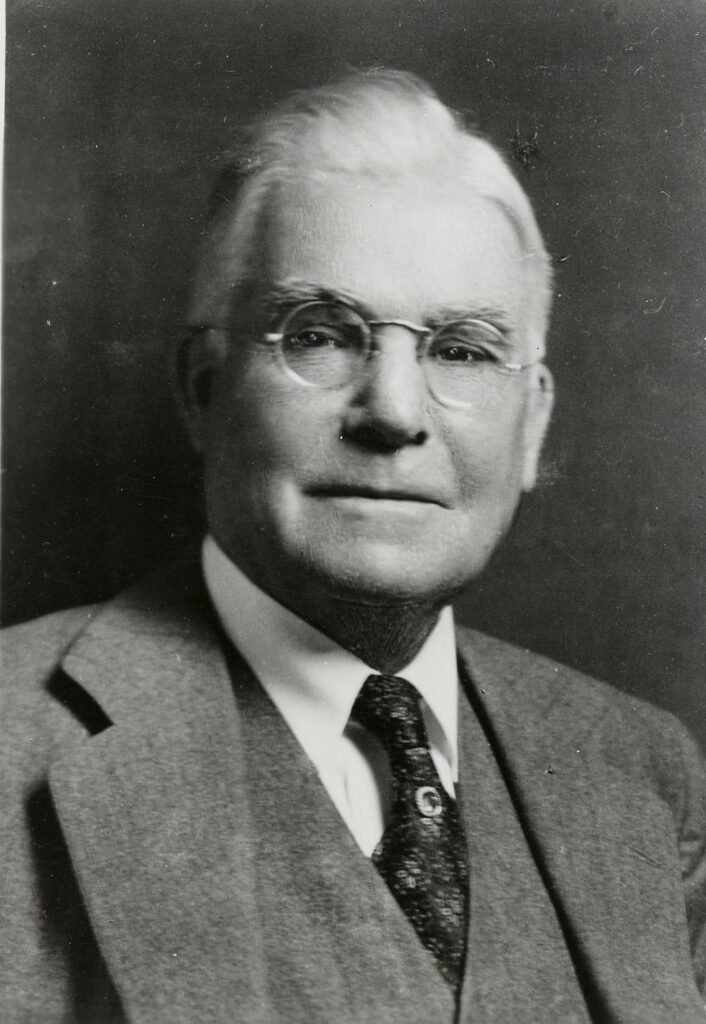
A large brick chapel at the corner of Boulevard and North Avenue in Atlanta was constructed in 1925 and served as both meetinghouse and mission headquarters. Growth continued slowly around the state until after World War II (1941-45), when numbers began to increase and members were encouraged to remain in Georgia rather than gather in Utah. A stake (or diocese) organized in Atlanta in 1957 included 2,700 members. A temple, the most sacred Mormon building, was dedicated in Sandy Springs in 1983; known today as the Atlanta Georgia Temple, it was the first temple in the Southeast. Georgia governor George Busbee spoke at the temple groundbreaking in 1981, and 60,000 visitors toured the building before its dedication.

Photograph by Ray Luce
As of 2007 there are eight stakes in the greater Atlanta area, as well as stakes in Albany, Athens, Augusta, Columbus, Douglas, Kingsland (Camden County), Macon, and Savannah. Chapels, or individual meetinghouses, exist in eighty-four Georgia communities. Atlanta also has a cannery and a regional storehouse to help with the church’s welfare program.
Gladys Knight, a Georgia native and prominent Latter-day Saint, directs the Saints Unified Voices, a Mormon choir based in Nevada. In 2006 the choir’s album One Voice won a Grammy Award.








